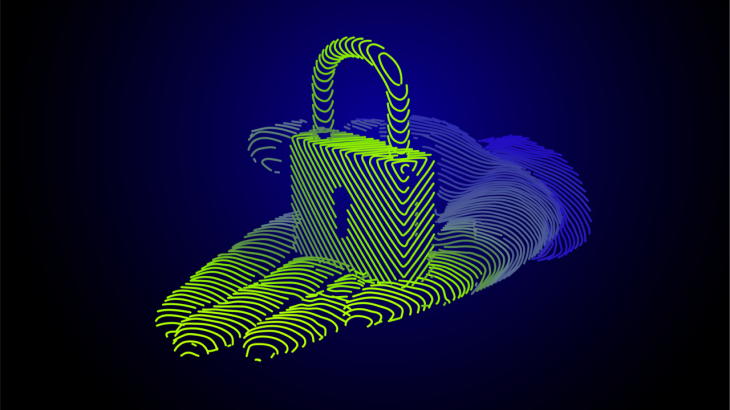
What is Password Vault? How does it Work?
One of the most important issues in the business world, which has become a crucial part of digital transformation, is secure password management. The recent increase in attempts to decrypt passwords on corporate networks shows that data breaches that may occur more frequently due to password vulnerabilities. For this very reason, not only strong and long passwords should be created, but also static passwords should be avoided.
No matter how long and strong a static password is, it can easily be targeted by cyber attackers. In fact, it is not difficult to disable even a long password consisting of different letters, numbers, and symbols with an ordinary cyber attack. Moreover, static passwords can easily be targeted by brute force attacks. For these reasons, you should use passwords that renew themselves periodically, thus preventing problems in the event of any cyber threat.
Situations That Cause Password Vulnerabilities in Institutions
The main way to use non-static passwords and have thorough password security on your network is to use centralized password management systems. Before examining central password management systems that provide critical data security, it is useful to take a look at the situations that cause password vulnerabilities in institutions.
The situations that create password vulnerabilities and leave institutions vulnerable to any cyber attack can be examined under three categories: unsafe networks, untrained employees, and systems in danger.
- Unsecured networks: Organizations that use VPN policies and practices may lose user passwords on networks in case of a cyber attack due to lack of strong data security.
- Untrained employees: Giving password-based login information to employees who are not trained in secure password management is a big mistake. These employees may unintentionally allow password theft.
- Compromised systems: Errors in operating systems, unpatched system vulnerabilities and use of third-party applications with weak cybersecurity protocols may result in the passwords of the organization being hacked.
On the other hand, the results of survey and data analyses conducted by GoodFirms also reveal important insights about the points to be considered in creating corporate security policies. 62.9% of the participants in these studies change their passwords only when asked. 45.7% of the participants in the same sample use the same password for multiple websites and applications. 52.9% of the participants share their passwords with family members and friends. In addition to all these, 35.7% of the participants in the study still continue to write down their passwords in a notebook.
Dynamic Passwords and Centralized Password Management
The first step in ensuring access security is to switch from static passwords to dynamic passwords. A dynamic password can simply be defined as a type of password that constantly changes, thus providing a high level of security against internal and external threats. A dynamic password doesn't mean users change their passwords all the time. The passwords used in banking systems and sent to your smartphone to give you access to the banking application are an example of dynamic passwords. These passwords, called One-Time Password (OTP), are randomly and automatically generated by a machine to be used only once.
The way dynamic passwords work is based on authentication. In this method, which also makes it easier to control privileged account access, you are sent a code that is to be used only once, expires in a short time, making it difficult for cyber attackers to access your network. Authenticator services, which send strong codes that have a certain time period of validity for access, are a simple example of dynamic passwords. The way to achieve this step and to secure passwords throughout your company is the Password Vault.
So How Does Password Vault Work?
Password Vault, one of the Privileged Access Management (PAM) solutions, keeps all passwords in a fully encrypted system. The Password Vault provides protection in an encrypted vault, creates unique passwords, and automatically and randomly generates passwords.
Password Vault module has two different working principles. The first method focuses on the working principles of this system as a central password safe, while the second method focuses on the same subject as an application-to-application password checker.
DPC as a central password vault
Thanks to its password safe feature, DPC can keep user passwords independently from the network. This makes it easy to control authorized access permissions.
- 1st step: Users log into the DPC system with their own username and password and select the target server they want to connect to.
- 2nd step: DPC sends the password for the target server to the user. This is an OTP, one-time password, valid for a limited time period. In addition, Single Connect keeps a record of all exit activities in the system log.
- 3rd step: Users log into the system with the OTP sent to them.
- 4th step: When the OTP expires, the Password Vault connects to the target server and changes the password. When the password is changed, the user is completely logged out.
DPC as application-to-application password checker
Apart from these, DPC's discovery engine can discover service accounts, network devices, virtual platforms, Linux servers, and Windows local and domain accounts. This feature facilitates access to application accounts and provides enhanced password security when using network devices or running scripts.
- 1st step: The application requests password of a target server from the Single Connect AADPC via a secure API.
- 2nd step: After Single Connect authenticates the application, it sends the password of the target server to the application through API. This password is an OTP and is valid for a limited time period.
- 3rd step: The application connects directly to the target server and logs in with the password it just received.
- 4th step: After the OTP expires, the DPC connects to the server and changes the password and logs out.
What are the Benefits of Password Vault?
Password Vault offers significant benefits to organizations in various aspects. For example, while this system limits password sharing events, it raises the level of control by requesting managerial approval for the transactions that privileged accounts will do with their passwords.
Key Benefits
- DPC stores encrypted passwords in a password safe, isolated from the system. You never know where user passwords are stored.
- DPC splits passwords on critical systems into chunks. The method called split password provides more secure password management.
- DPC records which real user is using the OTP with start and end times.
- With its password reservation feature, DPC allows users to store a password for future use.
You can build an advanced password management system for your organization with Password Vault, which offers secure password management for thousands of privileged users and complex authorized access. With DPC, which secures your IT system in password management thanks to its superior features, you can prevent cyber attacks and avoid possible financial losses. With the Password Vault solution, which helps to avoid situations that cause password vulnerability in institutions, you can also avoid workflow interruptions as you reduce the potential damage you may get from cyber attacks.
You can also contact us to get information about all the features of the Password Vault solution or to learn more about our Privileged Access Management suite Single Connect in detail.
Highlights
Other Blogs

More Than a Billion People Were Affected by Corporate Data Breaches in 2018















